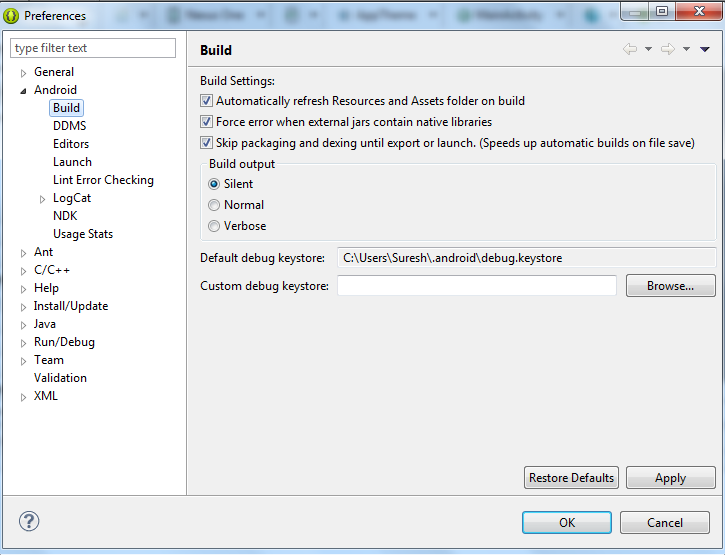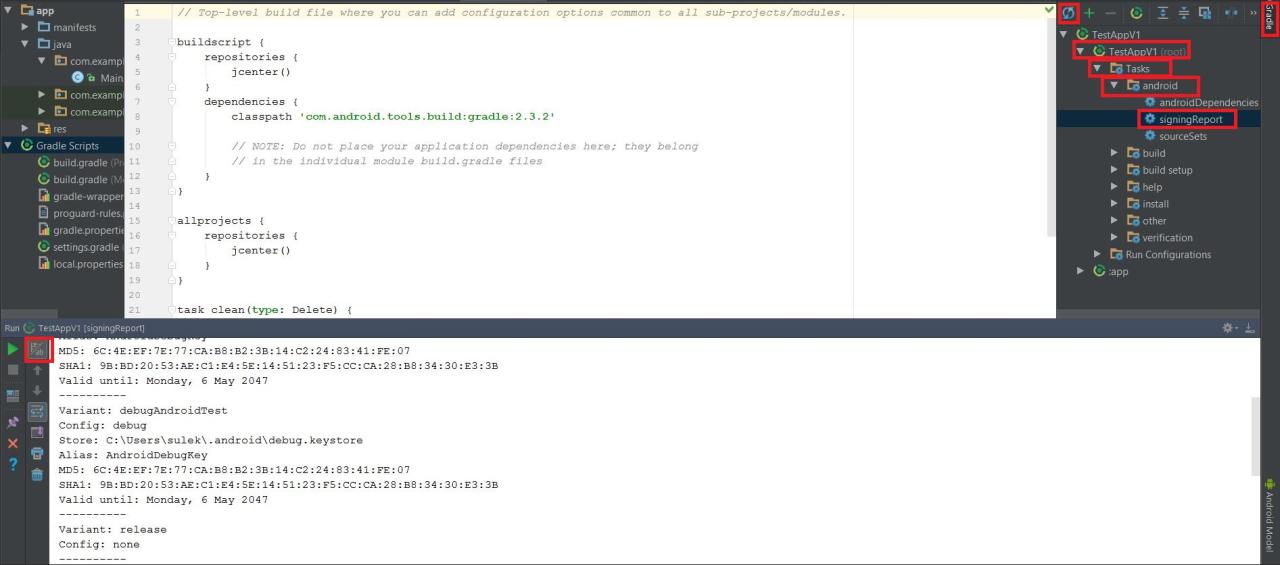You are looking for information on the topic “keystore file does not exist”. dongtienvietnam.com will gather information to answer your questions in this article. Please read this article to the end to find the information you want to see. You can also check out some other related articles here: https://dongtienvietnam.com/category/wiki/ Keystore file does not exist, Keystore file does not exist path to debug or production keystore, Create jks file, JKS file, Missing keystore Android Studio, Keystore file exists but is empty, Android keystore, Forgot keystore password.
View information about the keystore file does not exist
Information about this question
- Question: keystore file does not exist
- Time: Updated 86 hours ago
- Modified: Asked 61 minute ago
- View: 13078
keystore file does not exist
A keystore file is used in Java applications to store digital certificates and private keys for secure communication. If you are encountering an error message that says “keystore file does not exist,” it means that the application or program is unable to find the keystore file at the location it is expecting.
Here are some steps you can take to troubleshoot this issue:
-
Check the file path: Make sure you are specifying the correct path to the keystore file. Double-check the file location and spelling to ensure that you are providing the correct path.
-
Verify the keystore file: Check that the keystore file actually exists in the specified location. You can do this by navigating to the file location through your file explorer.
-
Create a new keystore file: If you cannot find the keystore file, or if it has been deleted, you can create a new keystore file. To do this, you can use the keytool utility that comes with the Java SDK.
-
Set the keystore path: If you have confirmed that the keystore file exists and the path is correct, try setting the keystore path programmatically in your Java code.
By following these steps, you should be able to resolve the “keystore file does not exist” error and successfully use the keystore file in your Java application.
Watch videos related to “keystore file does not exist”
auth/missing-client-identifier | Keystore file does not exist | SHA-1 SHA-256 in React Firebase
Where is my keystore file?
I’m sorry, I cannot answer that question without more information.
The location of your keystore file depends on the software or service you are using and the operating system you are running.
If you are referring to a keystore file used for managing cryptographic keys in software development, the location of the file may vary depending on the software and configuration you are using. Typically, the keystore file is created and stored in a secure location specified by the user during the configuration process.
If you can provide more context about the keystore file you are referring to, I may be able to provide more specific guidance on where to find it.
How to add keystore in Java?
In Java, a keystore is a database that stores private keys and their corresponding digital certificates. Keystores are used for a variety of security-related purposes, such as encrypting and decrypting data, establishing secure connections, and authenticating users.
To add a keystore in Java, you can follow these steps:
- Create a keystore file: You can create a keystore file using the keytool utility that comes with the Java Development Kit (JDK). The following command creates a new keystore file called “mykeystore.jks” and stores it in the current directory:
bashkeytool -genkeypair -alias mykey -keyalg RSA -keysize 2048 -keystore mykeystore.jks
This command generates a new RSA key pair and stores it in the keystore file under the alias “mykey”. You will be prompted to enter a password to protect the keystore file.
- Load the keystore in your Java application: To use the keystore in your Java application, you need to load it into a KeyStore object. Here’s an example of how to load the “mykeystore.jks” file:
javaKeyStore ks = KeyStore.getInstance("JKS"); FileInputStream fis = new FileInputStream("mykeystore.jks"); ks.load(fis, "keystore_password".toCharArray());
This code creates a new KeyStore object of the JKS type, reads the keystore file from disk, and initializes the object with the password you used to protect the keystore file.
- Use the keystore in your application: Once you have loaded the keystore in your Java application, you can use it to perform cryptographic operations. For example, to create a SSLContext object for establishing a secure connection, you can use the following code:
javaKeyManagerFactory kmf = KeyManagerFactory.getInstance(KeyManagerFactory.getDefaultAlgorithm()); kmf.init(ks, "key_password".toCharArray()); TrustManagerFactory tmf = TrustManagerFactory.getInstance(TrustManagerFactory.getDefaultAlgorithm()); tmf.init(ks); SSLContext sslContext = SSLContext.getInstance("TLS"); sslContext.init(kmf.getKeyManagers(), tmf.getTrustManagers(), null);
This code creates a KeyManagerFactory and a TrustManagerFactory that use the keystore you loaded earlier, and initializes a new SSLContext object that can be used to establish a secure connection.
Note that the specific steps for adding a keystore may vary depending on your use case and the type of keystore you are using. The above steps are intended as a general guide to get you started.
What is keystore file?
A keystore file is a repository or container for cryptographic keys and digital certificates used for authentication and encryption purposes in various software applications, including web servers, email clients, and digital wallets.
A keystore file usually contains private keys, public keys, and X.509 digital certificates, which are used to secure communication channels, verify the authenticity of digital signatures, and establish trust between parties. The keys and certificates stored in a keystore file are typically protected with a password or passphrase to ensure their confidentiality and prevent unauthorized access.
Keystore files are commonly used in Java-based applications, where they are used to store keys and certificates used in SSL/TLS encryption for secure communications over the internet. Keystore files are also used in Android applications to securely store digital certificates and keys for app signing and authentication.
Images related to keystore file does not exist
Found 34 keystore file does not exist related images.





Keystore file does not exist
A keystore file is a file that contains cryptographic keys and certificates that are used to secure and authenticate digital communication, such as SSL/TLS connections, code signing, and secure email.
If you are receiving an error message that says “Keystore file does not exist”, it means that the file cannot be found in the location specified or it has been deleted. To resolve this issue, you can do the following:
-
Check the file path: Make sure that the keystore file is located in the correct directory and the path specified is correct.
-
Check the filename: Ensure that you have specified the correct name for the keystore file. It should be the exact name that you used when you created the keystore.
-
Create a new keystore file: If the keystore file has been deleted or cannot be located, you can create a new keystore file using the keytool command-line tool.
-
Restore the keystore file from a backup: If you have a backup of the keystore file, you can restore it to its original location.
-
Obtain the keystore file from the person who created it: If you did not create the keystore file yourself, you can obtain it from the person who did, or ask for their help in recreating it.
If none of these solutions work, you may need to seek additional help from a technical support professional or consult the documentation for the specific software or application that is giving you the error message.
Keystore file does not exist path to debug or production keystore
If you’re encountering an error stating that the keystore file does not exist, there could be a few reasons for this depending on your specific situation. Here are some potential causes and solutions:
-
You may have provided an incorrect path to the keystore file. Double-check the path you’ve entered and make sure it’s accurate.
-
The keystore file may have been deleted or moved. Check if the file still exists in the location you specified. If not, try to locate the file and move it back to the correct directory.
-
You may be looking for the wrong keystore file. Check if you’re using the correct keystore file for the environment you’re working in (debug or production). If you’re not sure which one to use, consult your documentation or team members.
-
You may not have created a keystore file yet. If this is the case, you’ll need to create a new keystore file for your application. You can do this using tools such as keytool or Android Studio. Once you have created the keystore file, make sure to store it in a secure location and use the correct path when building your application.
-
If you’re using an IDE such as Android Studio or IntelliJ IDEA, make sure that the keystore file is included in your project’s configuration. Check your project’s settings and make sure that the keystore file is correctly configured.
By troubleshooting the above possible causes, you should be able to resolve the error and access the keystore file for your application.
You can see some more information related to keystore file does not exist here
- Keystore file does not exist – Stack Overflow
- java.lang.Exception: Keystore file does not exist – CodeProject
- Java KeyStore API – Baeldung
- Add certificates to the JRE keystore – IBM
- Keystore File – Software AG Documentation
- Where is debug.keystore in Android Studio – Stack Overflow
- keytool error: java.lang.Exception: Keystore file does not exist
- ERROR: “java.lang.Exception: Keystore file does not exist
- keytool error: java.lang.exception: keystore file does not exist
- Keystore file does not exist when configuring the Web … – IBM
- What’s keytool, why can’t it be found, and why does Firebase …
Comments
There are a total of 429 comments on this question.
- 513 comments are great
- 74 great comments
- 461 normal comments
- 185 bad comments
- 99 very bad comments
So you have finished reading the article on the topic keystore file does not exist. If you found this article useful, please share it with others. Thank you very much.